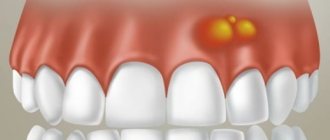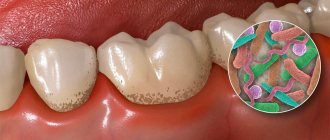Sepsis is the most severe, generalized form of the infectious process, which develops either with a high pathogenicity of the pathogen or with an insufficient response of the body's defense systems. International consensus recommends using the following definition: sepsis is a life-threatening dysfunction of internal organs caused by dysregulation of the body's response to infection. With sepsis, general intoxication syndrome, thrombohemorrhagic syndrome (hemorrhages) and damage to internal organs are observed.
- Causes of sepsis
- Types of sepsis
- The first signs and symptoms of sepsis
- Diagnosis of sepsis
- Stages of sepsis development
- Treatment of sepsis
- Complications of sepsis
- Prognosis for sepsis
Causes of sepsis
Sepsis can be caused by most microorganisms known in epidemiology, including bacteria, viruses (including seasonal influenza viruses), fungi, and parasites. Typically, the infectious agent enters the body from the external environment. Under certain conditions, for example, with immunodeficiencies, the disease can develop from the natural, opportunistic flora of the body, which is normally present in every person.
The presence of infection in itself does not guarantee the development of sepsis. Additional conditions are needed that will lead to generalization of the process and a pathological response of the body. The likelihood of such events increases in the following cases:
- The patient's age is over 75 years.
- Performing surgeries or invasive procedures.
- Presence of injuries and burns.
- Immune system disorders - AIDS, cancer, chemotherapy, the need to use immunosuppressive therapy (for example, after organ transplantation), the need to take high doses of glucocorticosteroids.
- Long-term treatment in a hospital setting.
- Availability of catheters, cannulas, probes and other invasive devices.
- Pregnancy and childbirth.
- Chemical dependence - alcoholism, drug addiction.
- The presence of chronic diseases - chronic renal failure, respiratory failure, diabetes mellitus and much more.
The cardiovascular system
Against the background of advanced dental diseases, a number of heart diseases can develop:
- infective endocarditis - inflammation of the heart valves due to infection, which enters them through the bloodstream from the affected tooth, more often occurs when the immune system is weakened;
- heart failure - periodontal inflammation doubles the risk of its occurrence;
- heart attack, stroke. Due to inflammation and the transfer of bacteria through the bloodstream, atherosclerotic plaques form on the walls of blood vessels. The plaque clogs the vessel and a blood clot forms. If it comes off, a stroke or heart attack occurs.
Untreated caries and constant inflammation in the oral cavity increase the risk of cardiovascular diseases by 70%.
Types of sepsis
Depending on the location of the primary source of infection, primary (cryptogenic) and secondary sepsis are distinguished. In primary cases, the source of infection cannot be determined. In secondary sepsis, such a focus is present. Depending on its location, there are:
- Percutaneous sepsis. The primary focus is on the skin; these can be wounds, burns, purulent skin diseases (purulent abscesses, boils, etc.).
- Odontogenic sepsis. The cause of its development can be caries, pulpitis, periodontitis, maxillary osteomyelitis and other diseases of the dental system.
- Otogenic sepsis. The primary focus is the inflammatory process in the ear. As a rule, these are purulent otitis media of the middle ear.
- Gynecological sepsis - the primary focus is located in the woman’s genital organs.
- Surgical sepsis - develops as a result of infection of a surgical wound or infection during invasive procedures.
Book a consultation 24 hours a day
+7+7+78
Flux (periostitis)
Another common complication of pulpitis is inflammation of the periosteum. This is the periosteum, a fibrous membrane covering bone tissue. Flux develops in the projection of the lesion on the gum side. Pus accumulates under the mucous membrane and an abscess forms. In this case, a fistula may appear on the gum.
A characteristic symptom of gumboil is swelling of the gums and soft tissues of the face on the side of the affected tooth. The patient complains of severe pain. As a rule, body temperature rises.
Pulpitis of a baby tooth
2150 rub.
Tooth restoration after pulpitis/periodontitis
from 3180 rub.
Treatment of tooth pulpitis
from 4590 rub. up to 8990 rub.
The first signs and symptoms of sepsis
Identifying the first signs of sepsis can be difficult, even for specialists. This is due to the fact that, firstly, this syndrome develops against the background of an existing pathology, which can have a wide variety of symptoms, and secondly, in the presence of immunodeficiency, the clinical picture can be erased. However, there are some symptoms that suggest the onset of sepsis:
- Increase or decrease in body temperature - above 38 and below 36 degrees.
- Pressure drop below operating value.
- Increased heart rate.
- Increased frequency of breathing movements (shortness of breath).
- Decreased amount of urine excreted.
- General weakness, exhaustion.
- Impaired consciousness or behavior.
Particular attention is paid to the occurrence of these signs in chronic patients, in the presence of leukopenia, cancer, and in patients who have undergone trauma or surgery. If at least 2-3 of these symptoms occur, you should immediately contact your doctor.
How to treat an abscess
A specialist can easily diagnose a dental abscess. To do this, he needs to examine the patient. The doctor may also prescribe an x-ray in order to exclude medical error when making a diagnosis.
The main goal of treating an abscess is to eliminate the infection by specialists; at the same time, you need to be able to save your teeth and eliminate complications.
Doctors often use drainage of the abscess. To do this, a procedure such as tooth root canal is performed. Dead parts of the damaged tooth root are also removed. Next, the tooth is filled and, if necessary, a crown is placed. Drainage can be done by making an incision in the swollen gum if a tooth has been removed.
If an infection has developed and saving the tooth is problematic, the doctor will remove it.
Sometimes a modern treatment method is used, namely low-intensity laser. This laser allows you to open an abscess and drain it with less pain.
Also, specialists may prescribe a course of antibiotics and rinsing to reduce pain and discomfort.
Prevention
Methods for preventing abscess are simple. They include maintaining oral hygiene, timely treatment of diseases, periodic visits to the dentist, and avoiding any injuries to the mouth.
A disease such as a tooth abscess should not be ignored. If you have the slightest suspicion of an abscess, you should not delay it and you should immediately contact a dental clinic.
Number of views 3,278
Diagnosis of sepsis
Timely diagnosis of sepsis is crucial for the patient’s recovery. The earlier treatment is started, the greater the chances of success. The diagnosis is made on the basis of clinical examination and laboratory and instrumental examination.
Clinical criteria:
- Body temperature is more than 38 degrees or less than 36 degrees.
- Heart rate is more than 90 or exceeds the age norm.
- Respiration rate more than 20 times per minute.
- Presence of edema.
- Confusion.
- An increase in blood glucose levels of more than 7.7 µmol/l in the absence of diabetes.
- Disturbance of hemodynamic processes - a decrease in systolic blood pressure of less than 90 mmHg, or its decrease by more than 40 mmHg. from the usual meaning.
Laboratory criteria
A general blood test is performed with a leukocyte count and platelet count. In case of sepsis, leukocytosis is determined by more than 12*109/l or leukopenia when the number of leukocytes is below 4*109/l. There is also the release of immature forms of granulocytes into the bloodstream and a decrease in the number of platelets.
A biochemical blood test shows an increase in C-reactive protein, creatinine, and bilirubin. But these are nonspecific signs that can be observed in other diseases. Therefore, the search for more informative diagnostic methods continues.
Today, the main such markers are procalcitonin, presepsin, and CRP. Based on this laboratory indicator, a diagnosis is made and the dynamics of the disease are monitored.
Bacteriological culture
Detection of microorganisms in the blood is an important, but not mandatory, manifestation of sepsis. Even with the use of the most modern diagnostic systems and careful adherence to material sampling techniques, it is possible to isolate the pathogen from the blood in less than half of the cases. Therefore, a negative culture result in the presence of clinical symptoms should not be regarded as the absence of sepsis, and, conversely, the isolation of microorganisms from the blood in the absence of symptoms should be regarded as transient bacteremia or viremia, but not as sepsis.
However, biological studies should in any case be present as one of the stages in diagnosing sepsis for the following reasons:
- Possibility of determining the etiology of the pathogen.
- Selection or change of antibiotic treatment regimens.
- Monitoring the effectiveness of treatment.
- In some cases, it allows you to determine the source of infection, for example, catheter-related infection, endocarditis, etc.
Book a consultation 24 hours a day
+7+7+78
Stages of sepsis development
The development and course of the septic process is individual and depends both on the properties of the pathogen and on the characteristics of the patient’s body. However, several phases of the course of this disease can be distinguished:
- Voltage phase. In response to the introduction of the pathogen, the body’s defense systems are activated and mobilized, in particular the pituitary-adrenal system is activated.
- Catabolic phase. The patient's condition deteriorates due to metabolic disturbances. The processes of metabolism of proteins, fats and carbohydrates are enhanced, and they are extracted from the “depot”. Disorders of water-electrolyte metabolism and acid-base status also develop.
- Anabolic phase. At this time, recovery processes begin. This primarily concerns structural proteins.
- Rehabilitation phase. During this period, further restoration of metabolic processes occurs. In some cases, complete recovery is not possible.
As for the duration of the disease, everything is again individual. In some, stronger patients, sepsis is relieved within 3-4 weeks, in others it can last for years, periodically subsiding and flaring up.
In addition, when diagnosing sepsis, the following conditions are distinguished.
Toxic-resorptive fever
Toxic-resorptive fever is a condition that develops when bacterial toxins or tissue decay products are absorbed from the primary pathological focus. As a rule, this is typical for bacterial infections of wounds, catheters, etc. There are common typical syndromes that accompany infectious processes - fever, changes in general blood and urine tests (leukocytosis, proteinuria). Once the primary lesion is eliminated, the patient's condition stabilizes.
Septicemia
Septicemia is a form of sepsis in which there is a pronounced intoxication syndrome, hyperergy (increased reactivity of the body) and a rapid course. Septic foci are either minimally expressed or absent. This form of sepsis is more typical for children in the first years of life. The clinical picture is more characterized by general manifestations:
- Hemolytic jaundice, accompanied by yellowing of the skin and sclera.
- Rash. It first appears as small pink dots, which grow and merge with each other, forming pale pink or purple spots.
- In some patients, elements of the rash may become blistered or ulcerated. With deep lesions, subcutaneous fatty tissue may be affected with the development of phlegmonous inflammation.
- Hemorrhagic syndrome - hemorrhages in internal organs.
Septicopyemia
Septicopyemia is a form of sepsis in which in the body, in addition to general intoxication, metastatic abscesses begin to appear in organs and tissues, which are the result of bacterial embolism. Most often, the first abscesses are found in the lungs, and then the process spreads to other organs: liver, liver, heart, meningeal membranes, synovial membranes. Abscesses can break through and cause the development of pleural empyema, phlegmon, peritonitis, etc.
Treatment of sepsis
Treatment of sepsis is based on three principles:
- Sanitation of the primary lesion. This can be achieved with surgery and/or adequate antibiotic therapy. If a primary lesion is discovered that can be treated surgically, it is necessary to do this as soon as possible. This may include opening and drainage of abscesses, removal of infected invasive devices (catheters, implants, etc.), drainage and lavage of the abdominal cavity, etc.
Antimicrobial therapy is another cornerstone of sepsis treatment, and its timeliness and adequacy are important. For example, if septic shock develops, drugs should be administered within an hour of the onset of symptoms. In this case, the drug must cover the entire spectrum of suspected pathogens and, importantly, penetrate the primary infectious focus. If it is necessary to prescribe combination therapy of several drugs, they are used for no more than 5 days, after which data from biological research methods must be obtained and the treatment regimen must be adjusted.
- Ensuring oxygen transport - all clinical manifestations of sepsis are aggravated in conditions of lack of oxygen, so it is very important to control this process. To do this:
- Hemodynamic support - infusion of solutions that ensure replenishment of water and electrolyte balance, medications are prescribed to maintain blood pressure, etc.
Respiratory support - artificial ventilation, oxygen masks, etc.
- Correction of metabolic disorders
- Ensuring the supply of necessary nutrients (proteins, fats, carbohydrates). If the patient is unable to take food or nutritional formulas on his own, replacement therapy is considered.
Monitoring glucose levels.
- Detoxification activities.
One of the effective ways to treat sepsis is selective sorption on TORAYMYXIN columns. This technique is successfully used in many countries around the world. Currently, more than 200 thousand patients with septic shock and severe forms of sepsis have undergone such treatment. The effectiveness and safety of the technology has been confirmed in clinical studies.
Osteomyelitis of the jaw
One of the very serious complications of advanced pulpitis is the penetration of infection not only into the periodontium, but also into the bone tissue of the jaw. At the same time, destructive processes develop in it, which are clearly visible on an x-ray.
Often the cause of the development of osteomyelitis is difficult-to-erupt wisdom teeth. This disease is characterized not only by local symptoms, but also by signs of poisoning of the body, such as headache, weakness, poor sleep, and fever.
Complications of sepsis
- Complications from the respiratory system. Impaired ventilation of the lungs leads to an increase in the air-hematic barrier and, as a result, sweating of fluid into the alveoli. This further disrupts gas exchange and leads to the development of shock lung and respiratory distress syndrome, which is aggravated by fatigue of the respiratory muscles.
- Kidney complications. There is a decrease in the filtration function of the kidneys due to damage to the tubules, which developed as a result of a decrease in pressure. Accompanied by a sharp decrease in urine output, proteinuria, and azotemia.
- Impaired blood clotting due to a drop in platelet levels and the development of disseminated intravascular coagulation syndrome - a dangerous condition in which first there is massive formation of blood clots in the bloodstream, and then massive bleeding due to insufficiency of blood clotting factors.
- Neurological complications. Long-term sepsis can lead to the development of polyneuropathy, which, in particular, leads to weakening of the respiratory muscles and the inability to breathe independently.
- Septic shock is the most severe manifestation of sepsis, accompanied by a persistent decrease in blood pressure that is difficult to restore even with the use of fluid therapy and vasopressors. It develops due to the release of fluid from the blood vessels and due to general dehydration. At the same time, the violations are so severe that they can lead to the death of the patient from multiple organ failure.
Sinusitis
Appears due to constant inflammation in the oral cavity. The risk is higher if the upper molars and premolars (these are closest to the maxillary sinuses) are affected. The infection penetrates the maxillary sinuses and affects them, causing severe headaches, high fever, and constant purulent mucous discharge from the nasopharynx. Without adequate treatment, sinusitis becomes chronic and can provoke meningitis, sepsis localized near the brain, and damage to nerve endings. It cannot be treated only by relieving symptoms: antibacterial therapy and endodontic treatment are needed.
Prognosis for sepsis
The prognosis for sepsis is very cautious. The possibility of recovery is influenced by the characteristics of the etiological microflora, the general condition of the patient at the onset of the disease, as well as the timeliness and adequacy of the treatment. Sepsis occurs most unfavorably in elderly people and in weakened patients with concomitant diseases.
In general, in large clinics the mortality rate for this condition is 30-40%. With the development of septic shock, the situation worsens and, according to some data, in this case up to 90% of patients die from it.
Book a consultation 24 hours a day
+7+7+78
Periodontitis
In the absence of professional treatment, pulp inflammation progresses, and the infection spreads through the apical (apical) opening of the root to the adjacent periodontal tissue. Symptoms of this complication:
- Acute pain. In the serous form of periodontitis, they are aching in nature; with the development of suppuration, the pain becomes throbbing, “tearing.”
- Reaction to irritating factors. Pain when exposed to cold, heat, or pressure on the tooth.
- Change in gum color. The mucous tissue may darken and acquire a bluish tint.
- Deterioration of general condition. Increased body temperature and sleep disturbance are possible.
In some cases, periodontitis is almost asymptomatic and is complicated by the formation of granulomas and cysts.











